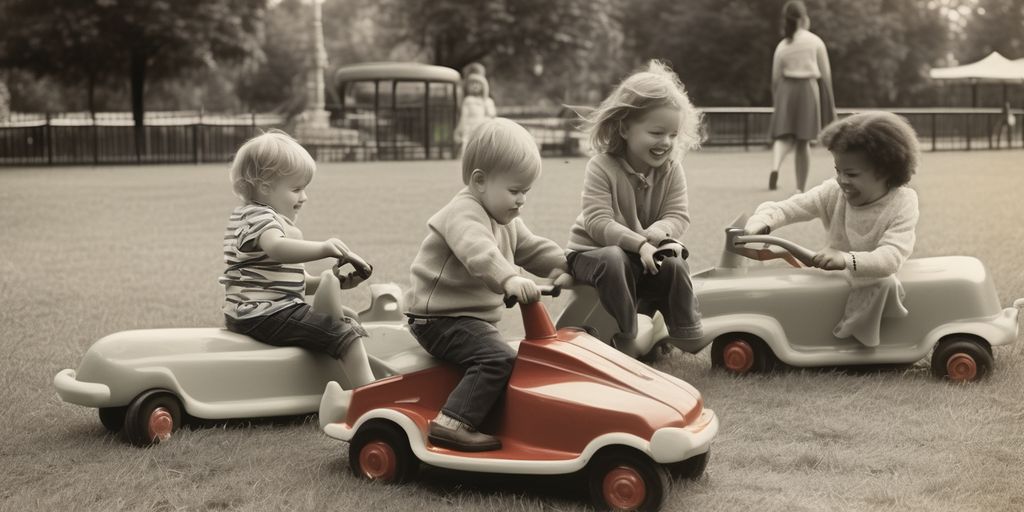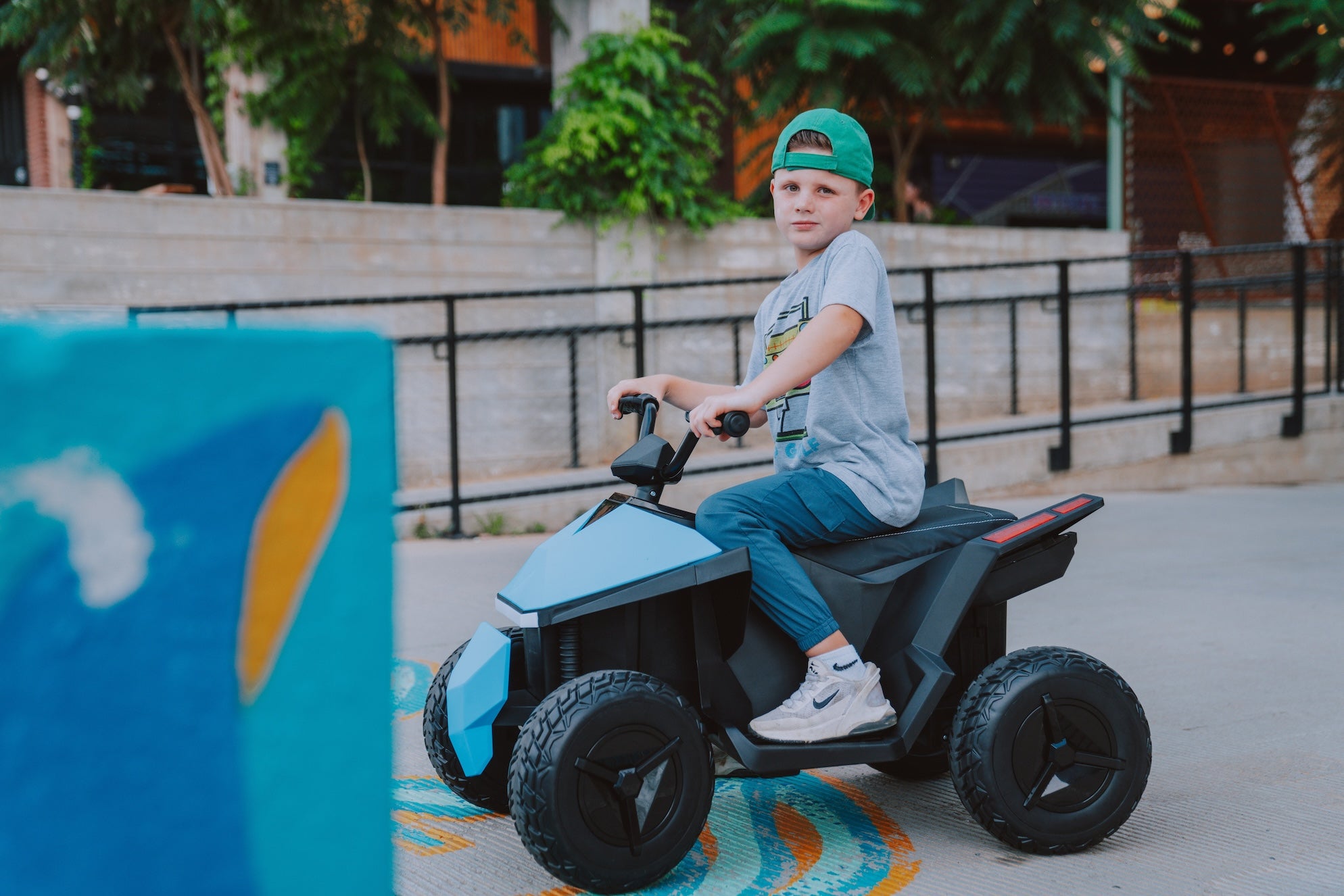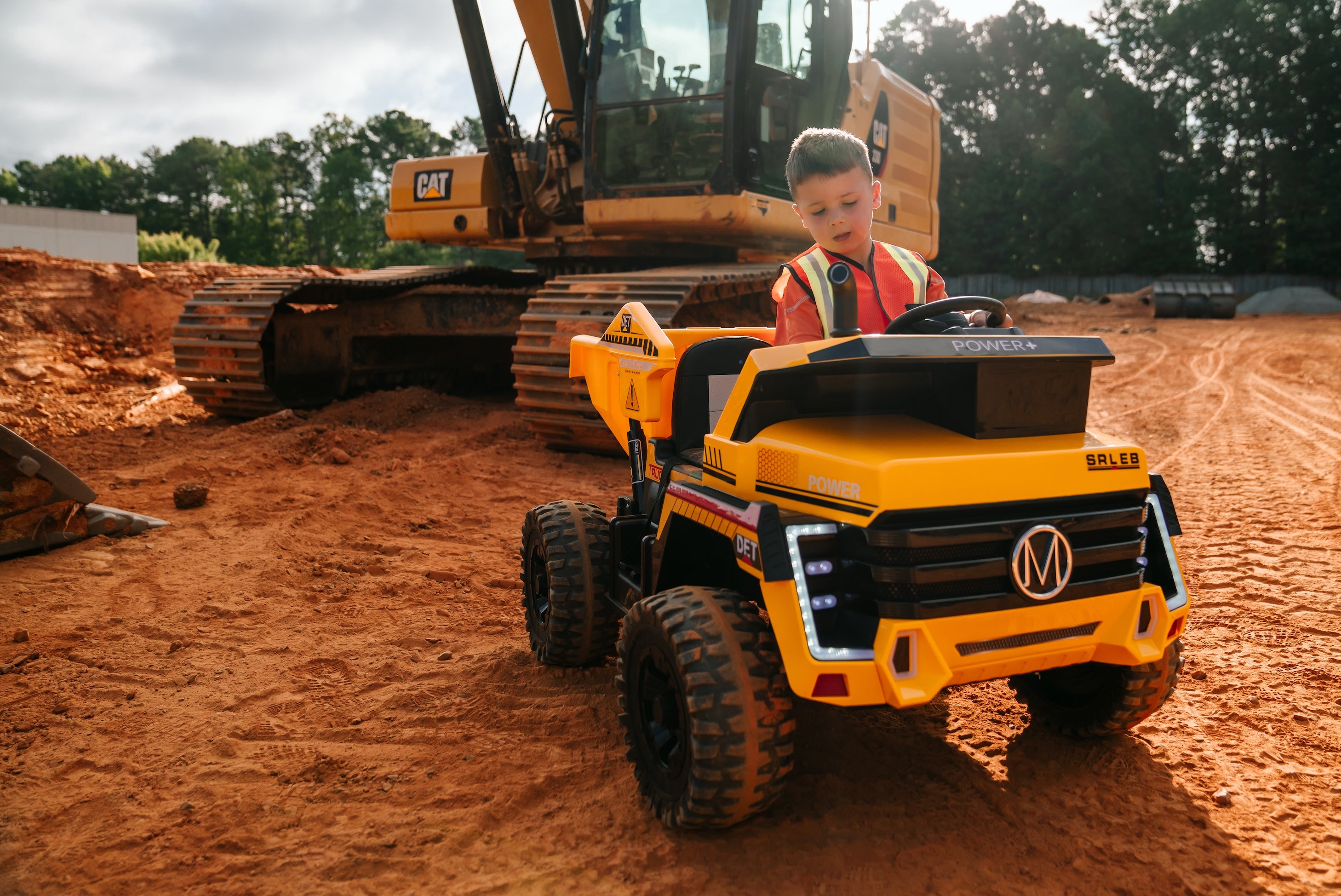Choosing the perfect ride-on toy for your little one can be as exhilarating as it is overwhelming. With the myriad of options out there, how can you ensure that your child or grandchild gets the joy of a new toy without compromising on their safety and development? Whether you’re strolling through park lanes or watching your youngster zoom around the garden, the right ride-on toy can spark endless giggles and create cherished family memories.
Key Takeaways
- Always consider the age and motor skills of the child when selecting a ride-on toy.
- Safety features are crucial; look for stability, low-speed models for toddlers, and more advanced features for older kids.
- Both manual and electric ride-on toys have their unique benefits and can cater to different preferences and needs.
- Proper maintenance and storage can significantly extend the lifespan of the ride-on toy.
- Reading reviews and recommendations can provide valuable insights into the best ride-on toys available on the market.
Understanding Different Types of Ride-On Toys
Ride-on toys are any vehicle your child can get on and ride around. They come in many shapes and sizes, from scooters to skateboards to tricycles. Some toys are geared toward more advanced users, while others are made for younger children learning how to ride. They are an excellent way for kids to get outside, have fun, and explore their world.
Each type of ride-on toy has its own set of benefits and considerations, but all share the common goal of fostering growth, learning, and joy in young adventurers. Whether helping a toddler develop basic motor skills or giving an older child the thrill of independence, ride-on toys are a cherished part of childhood that can offer fun, freedom, and learning opportunities.
Age-Appropriate Ride-On Toys
Choosing the right ride-on toy for your child involves considering their age and developmental stage. Always prioritize your child's safety and ability to control the toy. Here are some recommendations for different age groups:
Best Ride-On Toys for Toddlers
For toddlers, simple and stable vehicles are best. These toys help develop their walking abilities and coordination. Look for features like easy-to-grip handles and a low center of gravity to prevent tipping.
Top Choices for Preschoolers
Preschoolers enjoy more complex toys with interactive features. Battery-powered vehicles with realistic elements can be a hit. Ensure the toy has a speed limit and possibly a remote control for parents to maintain safety.
Ideal Ride-On Toys for Older Kids
Older kids may prefer ride-on toys that offer more excitement and challenge. Options like pedal-powered go-karts or electric ride-ons with interactive elements are great choices. Make sure the toy is sturdy and has low-speed settings for safety.
Consider if it is age-appropriate. A ride-on toy with a wide age range can save you money since it remains suitable as your child grows, providing them with years of fun and enjoyment.
Safety Considerations for Ride-On Toys
Ensuring the safety of your child while they enjoy their ride-on toy is paramount. Safety should always be your top priority when selecting and maintaining these toys. Here are some essential safety considerations to keep in mind:
Essential Safety Features
When choosing a ride-on toy, look for key safety features such as a sturdy construction, seat belts, and low-speed options for beginners. Parental remote controls can offer additional safety for younger children, allowing an adult to take over when necessary. Always follow the manufacturer's guidelines for use and invest in the recommended safety gear, such as helmets and pads.
Supervision and Usage Guidelines
Supervision is crucial when your child is using a ride-on toy. Make sure to educate your child on safe riding practices and always supervise their play to prevent accidents. It is essential to follow the manufacturer’s recommendations for age appropriateness, as some toys may have specific age guidelines due to the vehicle’s size, voltage, and other features.
Ensuring that the ride-on toy is in good condition before every use is part of this consideration.
Maintenance and Upkeep
Regular maintenance checks for tire pressure, brakes, battery levels (for electronic toys), and structural integrity can spot problems before they pose a risk to the child. Ensuring that the ride-on toy is in good condition before every use is part of this consideration. Regular maintenance checks can help in spotting problems before they pose a risk to the child.
Benefits of Ride-On Toys for Child Development
Ride-on toys are more than just fun; they play a crucial role in a child's development. Each type of ride-on toy has its own set of benefits and considerations, but all share the common goal of fostering growth, learning, and joy in young adventurers.
How to Choose the Perfect Ride-On Toy
Choosing the perfect ride-on toy for your little one can be as exhilarating as it is overwhelming. With the myriad of options out there, how can you ensure that your child or grandchild gets the joy of a new toy without compromising on their safety and development? Whether you’re strolling through park lanes or watching your youngster zoom around the garden, the right ride-on toy can spark endless giggles and create cherished family memories.
Maintaining and Storing Ride-On Toys
Cleaning and Care Tips
Regular maintenance is crucial for keeping your child's ride-on toy in top condition. Ensure that the ride-on toy is in good condition before every use by performing regular checks for tire pressure, brakes, battery levels (for electronic toys), and structural integrity. Thoroughly cleaning and drying the toy before storing it, especially during winter, is essential to prevent rusting or degradation of materials.
Proper Storage Solutions
Proper storage of the ride-on toy ensures both its longevity and safety for continued use. Toys should be stored in a clean, dry space away from the elements, which will prevent rusting or degradation of materials that could lead to unexpected breakages. Additionally, safe storage out of the path of adults and other children in the home can prevent tripping hazards and other domestic accidents.
Extending the Lifespan of the Toy
Addressing maintenance issues promptly and following the recommended battery charging times can prevent wear and tear and keep the ride-on toy running smoothly. Proper storage during periods of non-use prevents wear and tear. Keep the ride-on toy in a cool, dry place to maintain its quality over time.
Ensuring that the ride-on toy is in good condition before every use is part of this consideration.
Conclusion
Choosing the perfect ride-on toy for your child can be both an exciting and daunting task. With a myriad of options available, it's essential to consider factors such as age appropriateness, safety, and the child's interests. Ride-on toys offer unique benefits, from fostering independence and confidence to creating cherished memories. By taking the time to explore different products and understanding your child's needs, you can ensure that the toy you select will provide endless fun and developmental benefits. Remember, the right ride-on toy is not just a source of entertainment but also a tool for growth and learning. So, embark on this journey with confidence, knowing that the joy and laughter of your child await at the end.
Frequently Asked Questions
What should I consider when choosing a ride-on toy for different age groups?
When selecting a ride-on toy, consider the child's age and motor skills. For toddlers (1-3 years old), look for stable, low-speed models with simple controls. As children grow (4-8 years old), they can handle more features like higher speeds and interactive elements. Always check the manufacturer's age recommendation for guidance.
How do I determine the right size and type of ride-on toy for my child?
Consider your child's age, weight, and height. Make sure the ride-on toy is suitable for their size and can support their weight. Adjustable features can help accommodate growth.
Are electric ride-on toys safe for young children?
Electric ride-on toys can be safe for young children if they come with essential safety features such as seat belts, parental remote controls, and speed limiters. Always supervise your child while they are using the toy.
Can ride-on toys be used indoors and outdoors?
Some ride-on toys are designed specifically for indoor use, while others are made for outdoor adventures. Check the manufacturer's recommendations to ensure the toy is suitable for the intended environment.
What are the benefits of ride-on toys for child development?
Ride-on toys offer various benefits, including physical development through exercise, cognitive and emotional growth by encouraging exploration and problem-solving, and social interaction through cooperative play.
How can I maintain and store ride-on toys to extend their lifespan?
Regularly clean the ride-on toy according to the manufacturer's instructions, check for any loose or damaged parts, and store it in a dry, sheltered area when not in use to protect it from the elements.



Leave a comment
This site is protected by hCaptcha and the hCaptcha Privacy Policy and Terms of Service apply.